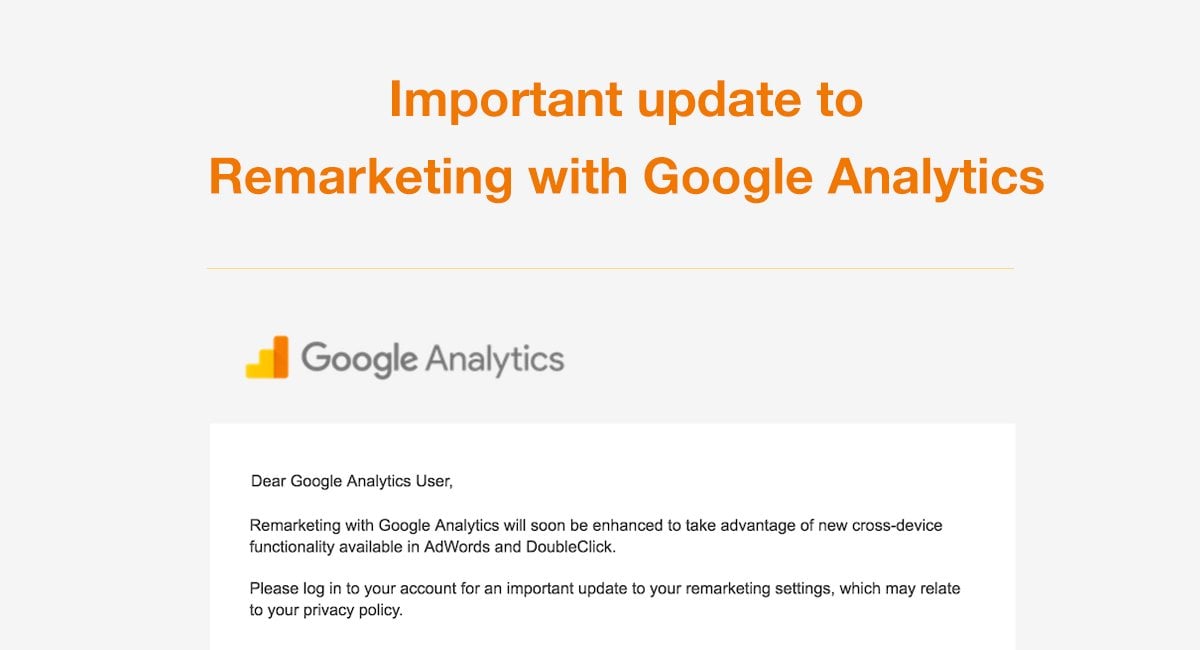Secret Attributes of Remarketing In Google Analytics Explained
Secret Attributes of Remarketing In Google Analytics Explained
Blog Article
Using Remarketing in Google Analytics: A Comprehensive Overview
Taking advantage of remarketing in Google Analytics uses companies a tactical edge in getting to out to potential customers. This overview will certainly shed light on the important steps entailed in using the full capacity of remarketing in Google Analytics, leading to improved advertising and marketing results.
Recognizing Remarketing in Google Analytics
Remarketing in Google Analytics permits companies to strategically target individuals who have actually previously engaged with their site or mobile app. By leveraging data from Google Analytics, services can produce customized remarketing checklists based upon customer habits, such as web pages checked out, actions taken, or details goals attained. This effective device makes it possible for businesses to re-engage with individuals that have actually shown passion in their items or solutions, ultimately raising the possibility of conversion.
Recognizing the various types of remarketing methods is essential for an effective campaign - What Is “Remarketing” In Google Analytics?. Google Analytics uses various alternatives, including typical remarketing, dynamic remarketing, and remarketing listings for search advertisements (RLSA) Each kind offers a distinct purpose and can be tailored to fulfill particular advertising and marketing purposes
In addition, assessing the performance of remarketing projects is essential for optimizing results. Google Analytics supplies useful insights right into the effectiveness of different remarketing techniques, allowing services to make data-driven choices and improve their targeting approach. By continuously keeping an eye on and readjusting remarketing initiatives based upon analytics data, businesses can make best use of ROI and drive success in their advertising and marketing campaigns.
Setting Up Remarketing Campaigns

After establishing audience lists, the next step is to connect Google Analytics with Google Advertisements. By linking these two systems, companies can seamlessly move audience checklists from Google Analytics to Google Advertisements for remarketing purposes. This assimilation enables for more specific targeting and much better campaign efficiency.
As soon as the accounts are connected, companies can create remarketing campaigns in Google Ads making use of the target market provides formerly specified in Google Analytics. These campaigns can be customized with specific advertisement creatives, messaging, and bidding approaches to successfully re-engage with past site visitors and drive conversions. By following these steps, businesses can utilize the power of remarketing to boost their marketing efforts and enhance ROI.
Utilizing Audience Division Techniques

Predefined sections in Google Analytics enable you to swiftly evaluate More about the author typical audience classifications like brand-new individuals, returning customers, or users who finished a particular goal on your internet site. Custom segments, on the other hand, enable you to develop distinct sectors based on details standards that are very important to your company goals. Dynamic remarketing lists instantly readjust based upon user habits, revealing personalized advertisements to individuals that have actually connected with your site particularly ways.
Analyzing Remarketing Performance Metrics
Upon reviewing the efficiency of remarketing projects in Google Analytics, the analysis of vital performance metrics gives important understandings right into target market engagement and conversion prices. By diving into metrics such as click-through prices (CTR), conversion rates, expense per acquisition (CPA), and return on advertisement spend (ROAS), marketing experts can evaluate the success of their remarketing efforts. Examining these metrics enables marketing experts to optimize projects, improve audience targeting, and assign budget plans properly to boost overall remarketing performance.
Maximizing Remarketing Techniques
When refining remarketing methods in Google Analytics, concentrating on audience segmentation is paramount for accomplishing project success. By separating your target market right into particular sectors based upon their habits, demographics, or rate of interests, you can customize your ads better to each team. This targeted approach boosts the likelihood of involving customers that have actually already shown passion in your product and services, causing greater conversion prices.
One more essential element of enhancing remarketing approaches is continually screening and refining your projects (What Is “Remarketing” In Google Analytics?). A/B screening various advertisement creatives, messaging, or informative post deals can aid you recognize what reverberates finest with your target market and drives one of the most conversions. By assessing the performance of these tests in Google Analytics, you can make data-driven choices to enhance your remarketing efforts even more
Moreover, leveraging vibrant remarketing can significantly boost your project results. This attribute permits you to reveal individualized ads to customers based on their past communications with your website, showcasing solutions or items they have actually previously seen. By delivering tailored web content to individuals based upon their behaviors and interests, vibrant remarketing can assist raise interaction and drive conversions.
Conclusion
In final thought, utilizing remarketing in Google Analytics is a tactical approach to target users that have actually formerly engaged with a website. By developing personalized target market listings and using audience division methods, companies can optimize remarketing visit this website advocate raised conversion rates. Assessing efficiency metrics and constantly maximizing techniques are important for making the most of the performance of remarketing efforts.
Google Analytics supplies various alternatives, including conventional remarketing, dynamic remarketing, and remarketing listings for search ads (RLSA)After setting up target market listings, the following step is to link Google Analytics with Google Advertisements. By connecting these two systems, businesses can effortlessly move audience checklists from Google Analytics to Google Ads for remarketing objectives.Once the accounts are linked, organizations can create remarketing campaigns in Google Ads utilizing the target market details previously defined in Google Analytics.When refining remarketing methods in Google Analytics, concentrating on audience division is extremely important for achieving project success.
Report this page